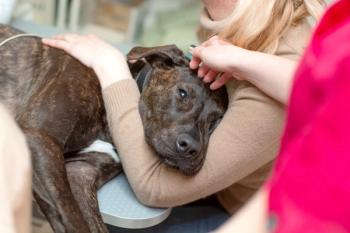
New York makes no kill commitment for 2005
New York-Officials of more than 70 New York City rescue groups aim to turn the nation's largest municipality into a no kill zone for the 60,000 homeless animals taken in by shelters each year.
New York-Officials of more than 70 New York City rescue groups aim to turn the nation's largest municipality into a no kill zone for the 60,000 homeless animals taken in by shelters each year.
By 2005, the only homeless animals euthanized will be those deemed terminally ill or not adoptable due to aggression. That leaves 40,000-plus unwanted animals in need of places to live.
The plan is lofty, but it's an achievable goal, officials say.
"Nobody in their right mind thinks you can go no kill overnight," says Jane Hoffman, president of the Mayor's Alliance, a not-for-profit organization of animal rescue and shelter groups. "We want to get to that state over several years, to get to the point where we're only euthanizing animals that are temperamentally too dangerous or too ill to be saved. It's a strategic plan we hope will one day make New York City safe for animals."
Core objectives
The five - year goal is fueled by a $ 5 million commitment to the Mayor ' s Alliance from the American Society for the Prevention of Cruelty to Animals ( ASPCA ). The plan consists of four core objectives: to up adoption numbers; decrease animal homelessness; raise public awareness of local shelter and rescue groups; and strengthen existing efforts and rescues.
"We estimate 15,000 healthy dogs and cats are euthanized each year in New York City, with the total number of deaths reaching 33,000," ASPCA President Ed Sayres says. "Our hope is that the overall number of animals at risk declines significantly, and eventually, we'll be able to apply more resources to fewer animals."
Marketing vs. reality
Taking New York City no kill is noble undertaking, but financial incentive might play a motivational role in the change, says Dr. Guy Pidgeon, president and chief executive officer of The Animal Medical Center.
"We're a veterinary teaching hospital, so what's good for New York pets is good for us," he says. "It's heart-wrenching to think of the dogs and cats put to sleep each year. But as well meaning as the no kill movement is, there are facilities out there that do it for the wrong reasons."
The tragedy is that financial support for shelters flows to agencies that market themselves as no kill, Pidgeon says, leaving many needy shelters with funding gaps. At presstime, the Mayor's Alliance was applying for a $16 million grant from the pet rescue foundation Maddie's Fund to jumpstart additional no kill programs.
"There are some real issues how all this plays out," Pidgeon adds. "It's marketing versus reality."
Harsh truths
The reality is that owners often drop pets off at no kill shelters under the guise that the animal won't be euthanized. That's not always the case, even for healthy animals, says Ed Boks, president of Animal Care & Control of New York City.
The agency works hard to place pets in homes, Boks says. But despite an aggressive adoption plan and education efforts, placing the animal isn't always an option.
"We have 250 organizations we partner with that will take the animals for placement," he says. "If no one can find the animal a permanent home, it's euthanized. An animal can't live its life caged. That's not no-kill; that's reality."
Early success
While Animal Care & Control of New York City is not part of the Mayor's Alliance, the not-for-profit agency is adopting no kill protocols. Boks, who took on the role last year after heading animal control in Maricopa County, Ariz., seeks to model the program after San Francisco's success in dealing with homeless animals.
So far, his numbers show progress. Year-to-date, the agency has sparked more than 1,000 new adoptions and euthanasia has dropped to 2,476, down from 3,441, Boks says.
"The real benchmark of our success will be when our animal care and control gets to the place when deciding whether an animal should be euthanized is a decision that a loving, caring veterinarian makes," he says. "We're certainly not your father's animal control."
Newsletter
From exam room tips to practice management insights, get trusted veterinary news delivered straight to your inbox—subscribe to dvm360.




